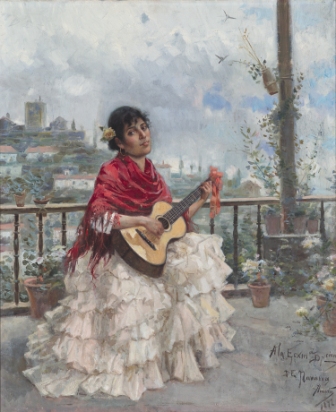25 November
lecture series
training AND sponsorship IN CONTEMPORARY ARTISTS
Origin and evolution of the artistic pensions of the Provincial Council of Navarre
D. Ignacio Urricelqui Pacho
Museum of Carlism
Artistic pensions, and particularly those granted by the provincial councils, were one of the pillars on which the training of Spanish artists was based during the 19th century and much of the 20th century. It was the artists themselves who, through their applications, made the provincial councils aware of the need to regulate aid to training and to allocate economic resources for this purpose. Moreover, this subject of aid was closely related to the Degree of permeability of the different local artistic environments with the needs of young artists who, increasingly, wanted to fill in their training in more exclusive centres both in Spain and abroad.
Navarrese artists were no strangers to these practices and demanded this subject aid from local institutions, provincial councils and town councils. This process was largely due to development of the local artistic environment in the late 19th and early 20th centuries, thanks to factors such as the creation of artistic centres training , with the School of Arts and Crafts at the forefront, whose doors opened in 1873; the promotion of artistic promotion channels such as competitions, contests, exhibitions, etc.; the birth of art criticism through the press; and the demand for both public and private clientele.
Strictly speaking, it was not until the end of the 1910s that the Diputación de Navarra had a specific regulation governing the granting of pensions for the artistic training , a very late date compared to other Spanish provinces, although this does not mean that it had not previously granted some aid with greater or lesser continuity. In general terms, two periods can be identified. The first began in 1880 and lasted until 1900, coinciding with the stage of training of a first group of Navarrese artists and with the first attempts of the provincial corporation in this subject; the second period, which began slightly in the second half of the 19th century, would reach its peak in the decades from 1920 to 1940, with the parenthesis of the Civil War, when the Diputación attended in a regulated way to the demand of Navarrese artists at training. After the Civil War, the issue of pensions and aid to the artistic training would remain in the hands of the recently created Institución Príncipe de Viana.

Inocencio García Asarta's pensioner shipment Gitana with guitar, 1892
(Photo: Museum of Navarre)
The impetus behind the aid to the artistic training has its own name and corresponds to that of the different artists who applied for it and who finally moved the provincial corporation to include in its annual budgets an item destined to cover the programs of study of training. Artists such as Domingo Martín Izangorena, Inocencio García Asarta, Nicolás Esparza, Jesús Basiano, Fructuoso Orduna and many others who received pensions played an important role in this process, but we must also acknowledge the work of many other young people whose applications were rejected, but who also contributed to the fact that the province's highest institution became aware of the needs of young artists at training.

Fructuoso Orduna in Rome, on a grant from the Diputación of Navarre
(Photo: Museum of Navarre)
data The applications of the interested parties, the works that accompanied them to prove their merits, as well as the letters of recommendation, provide precise information on the training pathway of our artists and also allow us to check the Degree of improvement of their work and their greater or lesser permeability to the new fashions and aesthetic tastes that would be echoed by the local press and the clientele.
